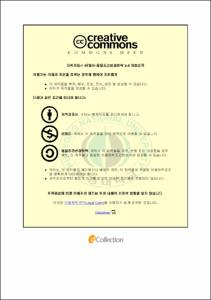22Cr Micro-duplex stainless steel의 기계적 거동에 대한 Mn 및 Ni 합금조성의 영향
- Alternative Title
- Effect of Alloying composition of Mn and Ni on the Mechanical Behaviour of 22Cr Micro-duplex Stainless steel
- Abstract
- In this study, effect of chemical composition and annealing treatment on the microstructure and tensile properties in micro-duplex stainless steels was investigated. To analyse the microstructure, metallographic observation(OM, SEM, EBSD and TEM), X-ray diffractometer, EPMA, and Ferritescope were used. Mechanical property of steels was tested by tensile test, and the microstructure and transformation behavior were compared after cold rolling of samples.
The steels with various Ni and Mn contents were annealed at the temperature range of 1,000∼1,100℃, where two phases of austenite and ferrite are stable. Their volume fraction depended on their alloy composition and annealing temperature. In fact, suitable volume fraction of metastable austenite was a requisite for a good balance of strength and ductility. The volume fraction of austenite phase was increased with the decrease of annealing temperature.
The strain-induced martensitic transformation process of austenite was investigated especially in connection with the plastic deformation behavior of these steels containing ferrite and austenite. The ferrite matrix was found to deform prevailingly under the external loading compared with austenite phase, which was got to know by EBSD and TEM observations.
Lots of martensite laths were found in the TEM photograph of cold rolled steels, which should be formed by strain induced deformation from austenite phase. It was observed also the intersections of stacking faults in the TEM photograph.
Another important mechanical aspect was the fracture of martensite. In the micro-duplex stainless steels, the volume fraction of martensite phase was increased by the increase of reduction ratio by cold rolling. Mechanical twins, strain-induced ε-martensite and α'-martensite were also formed depending on the composition and test temperature. The stacking fault energy of austenite phase in the micro-duplex stainless steels was inferred by the element partitioning analysis and it was low enough to enable the TRIP-assisted transformation. It was discussed about the factors influencing the TRIP kinetics in the present micro-duplex stainless steels with the different Ni and Mn content.
- Issued Date
- 2012
- Awarded Date
- 2012. 2
- Type
- Dissertation
- Keyword
- Cr-Mn micro-duplex stainless steel TRIP Tensile property microstructure cold rolling property
- Publisher
- 부경대학교 대학원
- Alternative Author(s)
- Park, Jun Young
- Affiliation
- 부경대학교
- Department
- 대학원 재료공학과
- Advisor
- 안용식
- Table Of Contents
- 1. 서론 .............................................................................................. P. 1
2. 이론적 배경 .................................................................................... P. 3
2.1 변태유기소성(TRIP: Transformation Induced Plasticity) ...................... P. 3
2.1.1 변형유기 마르텐사이트 변태 ........................................................ P. 3
2.1.2 변형유기 마르텐사이트 상변태 ..................................................... P. 7
2.1.3 변태유기소성의 발현 .................................................................. P. 11
2.1.4 가공유기변태에 의한 연성향상 기구 .............................................. P. 12
2.1.5 오스테나이트 → ε 마르텐사이트 변태 ........................................... P. 14
2.1.6 ε(hcp) → α‘(bcc) 변태에 관련된 원자이동 .................................... P. 16
2.1.7 변형량(Strain)의 영향 ................................................................ P. 19
2.1.8 변형속도(Strain rate)의 영향 ....................................................... P. 21
2.1.9 변형온도(Temperature)의 영향 .................................................... P. 24
2.2 듀플렉스 스테인리스강 ................................................................... P. 25
2.2.1 듀플렉스 스테인리스강의 화학조성 .............................................. P. 25
2.2.2 듀플렉스 스테인리스강의 기본조직 .............................................. P. 27
2.2.3 듀플렉스 스테인리스강의 석출상 ................................................. P. 28
2.2.4 이상 스테인리스강의 고온 상평형 ................................................ P. 31
2.2.5 이상 스테인리스강의 기계적 특성 ................................................ P. 33
2.3 축적에너지 (Stored energy) ........................................................... P. 37
2.3.1 축적에너지의 정의 .................................................................... P. 37
2.3.2 축적에너지에 영향을 미치는 인자 ................................................ P. 38
2.3.2.1 적층결함 에너지 ..................................................................... P. 38
2.3.2.2 변형온도 ............................................................................... P. 38
2.3.2.3 가공방법 ............................................................................... P. 38
2.3.2.4 합금원소 첨가 ........................................................................ P. 39
3. 실험 방법 ....................................................................................... P. 40
3.1 합금설계 및 용해 ............................................................................ P. 40
3.2 어닐링 열처리 ................................................................................ P. 40
3.3 인장시험 ....................................................................................... P. 41
3.4 페라이트 함량 측정 ......................................................................... P. 41
3.5 냉간압연 및 열처리 ......................................................................... P. 41
3.6 미세조직관찰 ................................................................................. P. 42
3.7 X-선 회절시험 ................................................................................ P. 42
4. 실험 결과 및 고찰 ............................................................................. P. 46
4.1 열처리 및 상분율 측정 ..................................................................... P. 46
4.2 상온인장 시험 ................................................................................ P. 52
4.3 저온인장 시험 ................................................................................ P. 65
4.4 냉간압연의 영향 ............................................................................. P. 79..
5. 고찰 .............................................................................................. P. 99
6. 결론 .............................................................................................. P. 103
7. 참고문헌 ........................................................................................ P. 105
- Degree
- Master
- Files in This Item:
-
-
Download
 22Cr Micro-duplex stainless steel의 기계적 거동에 대한 Mn 및 Ni 합금조성의 영향.pdf
기타 데이터 / 28.88 MB / Adobe PDF
22Cr Micro-duplex stainless steel의 기계적 거동에 대한 Mn 및 Ni 합금조성의 영향.pdf
기타 데이터 / 28.88 MB / Adobe PDF
-
Items in Repository are protected by copyright, with all rights reserved, unless otherwise indicated.